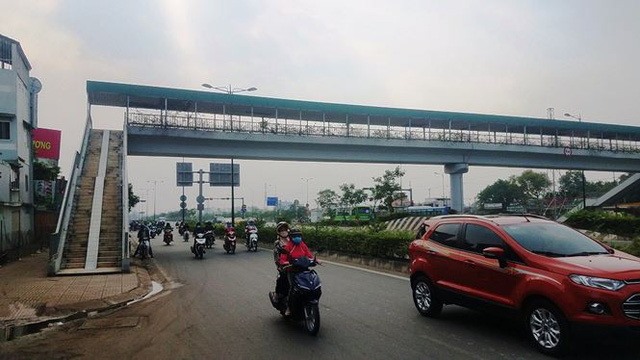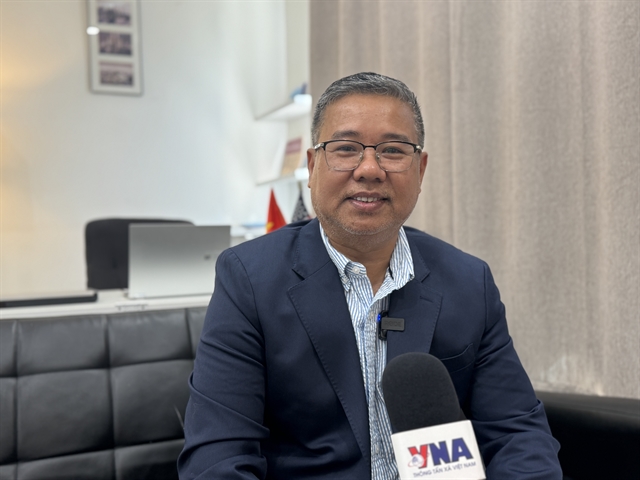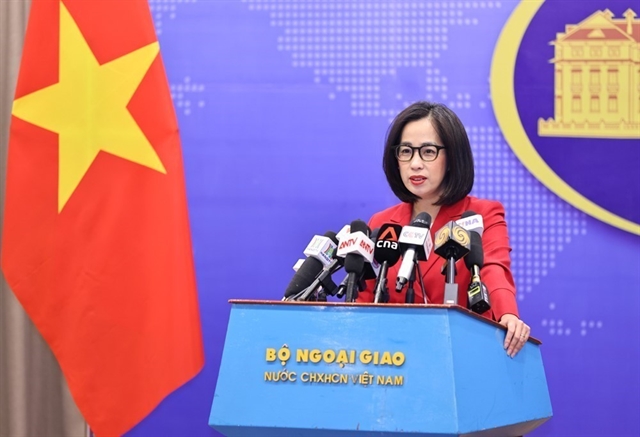 Society
Society

HCM City in recent years has built a number of multi-million dollar roads, including the Hà Nội, Nguyễn Văn Linh and Phạm Văn Đồng highways, but footbridges.and public restroom facilities were not included as part of the projects.
 |
| A newly built footbridge on Phạm Văn Đồng Highway which connects districts Thủ Đức, Bình Thạnh and Gò Vấp in HCM City. VNS File Photo |
HCM CITY — HCM City in recent years has built a number of multi-million dollar roads, including the Hà Nội, Nguyễn Văn Linh and Phạm Văn Đồng highways, but footbridges and public restroom facilities were not included as part of the projects.
Without such conveniences, drivers, motorcyclists and passersby are forced “to answer the call of nature”.
With no public conveniences along the 15km-long Hà Nội Highway, many students from the National University in HCM City have complained about the bad odour at bus stops along the highway.
Passengers on Nguyễn Văn Linh have faced the same problems despite the “no passing of water” signs placed by residents along the road.
Nguyển Thị Như, a street vendor selling beverages on Nguyễn Văn Linh Highway, said she has to clean up her site every day because drivers and passerby use the spot to urinate.
“I hope the city authorities will build toilets on this road and other highways,” Như told Tuổi Trẻ newspaper.
Footbridges
Similarly, there are no footbridges on the 10-lane Trường Chinh Road which runs through the districts of 12, Tân Bình and Tân Phú.
As a result, many passersby have to venture to cross the 12- to 16-lane, 113 – 123 metre-wide Hà Nội Highway because there are few footbridges.
Trương Thị Lý, a resident living near the Phạm Văn Đồng – Lê Quang Định Roundabout, said that many collisions between motorbikes and passersby have been reported at the roundabout.
Footbridges would help prevent traffic accidents and reduce traffic congestion, she added.
Lê Ngọc Hùng, head of the Urban Transportation Management Division No 2, said the department has finished a feasibility study for facilities on the two sides of Hà Nội Highway, with investment amounting to US$200 billion (about US$8.8 million).
Construction work will include greenery spaces, entertainment areas, and public convenience facilities.
To lower investment needed from the State budget, capital from the private sector will be sought for construction of a number of works.
Hùng said that construction is scheduled to start in 2019.
The Management Authority for Urban Railways of HCM City said that the Metro Line No 1 project (that links Bến Thành Market in District 1 with Suối Tiên Tourist Park in District 9) will include footbridges across Hà Nội Highway.
Nguyễn Vĩnh Ninh, head of the Urban Transportation Management Division No 1, said the agency has outlined plans for footbridges throughout the city.
The plans are based on proposals made by local residents and traffic police who have complained about traffic accidents on these roads.
Division No 1 has also joined hands with a number of enterprises to build public convenience facilities on certain roads in the city.
Ninh said the city Transport Department has asked Division No 1 to include footbridges on new and existing road projects of over six lanes.
Meanwhile, Lê Hồng Việt, deputy inspector of the Transport Department, said public convenience services should be privatised and investments into these services should be refunded under different investment modes.
He said that authorities should also issue regulations requiring hotels and restaurants to allow passersby to use free restrooms. — VNS




